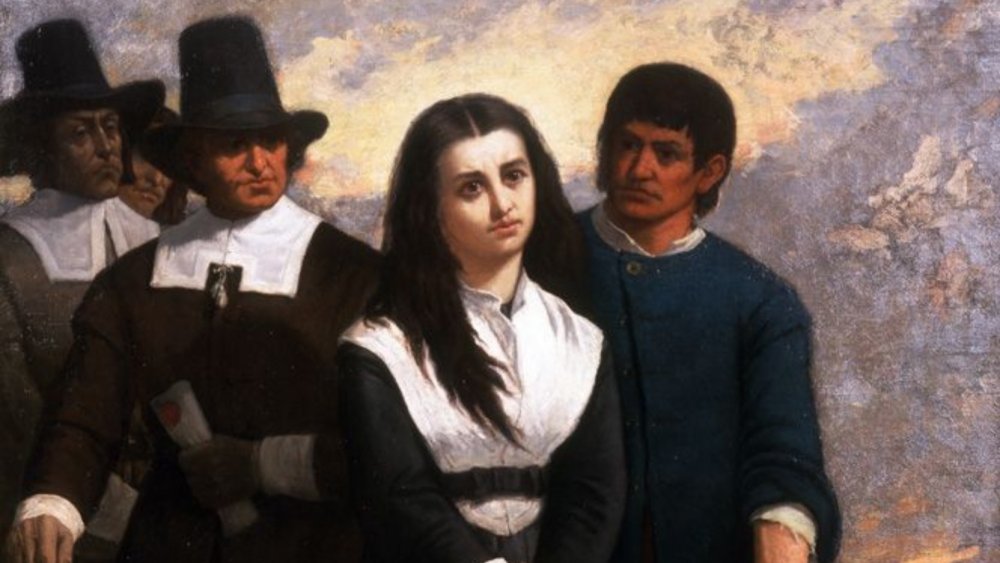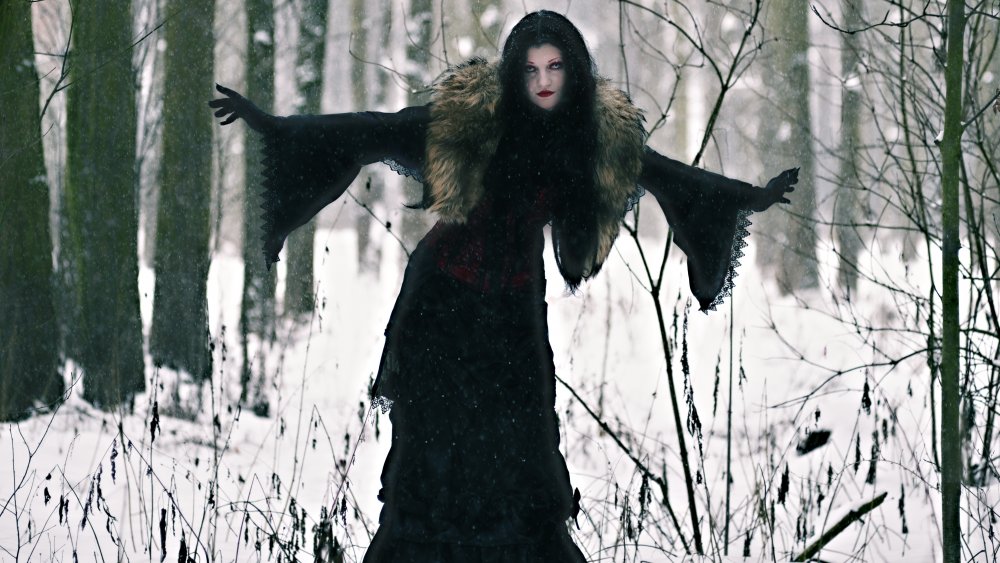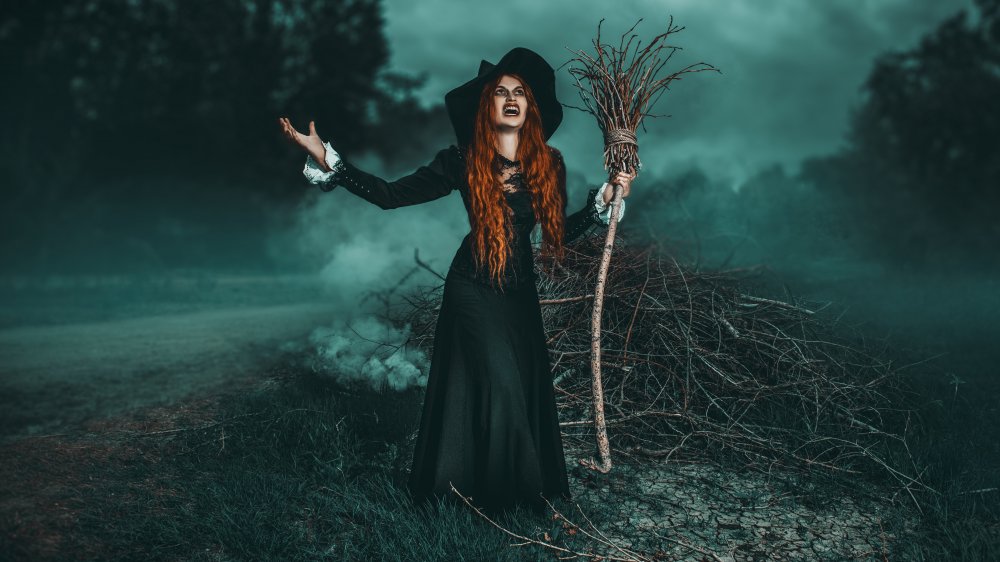The Real Reason The Salem Witch Trials Happened
Twenty people — that's how many were executed in the 1692 Salem Witch Trials. Nineteen of them were hanged, per Famous Trials, and the other was a man in his 80s who "was pressed to death under heavy stones for refusing to submit to a trial on witchcraft charges." Another four defendants died awaiting trial, according to History of Massachusetts. Dozens of others suffered behind bars without standing trial.
The infamous witch hunt began with "a group of girls behaving strangely." After a doctor blamed bewitching, the girls blamed a slave named Tituba. Rather than professing her innocence Tituba confessed and alleged that were other witches in their midst. The people who least conformed to the norms of Salem's Puritan society suffered most. "Outspoken women," slaves, Quakers, people with criminal histories, and people objected to the witch trials found themselves on the receiving end of witchcraft accusations.
One theory holds that contaminated rye harvests spread ergotism, a fungus-born disease that causes convulsions, hallucinations, and vomiting. But as YouTuber Sabrina Cruz insightfully asked, "Why would [ergotism] only affect girls?" Moreover, it doesn't account for the accusers obviously targeting of outcasts in the community. What was driving that injustice?
A winter of discontent
As Live Science describes, economist Emily Oster observed that "the most active era of witchcraft trials in Europe coincided with a 400-year period of lower-than-average temperature known to climatologists as the 'little ice age.'" As a senior at Harvard she argued that witch hunts coincided with cold spells because people needed something to blame for crop-killing temperatures. Notably, the Salem Witch Trials occurred during "an extreme cold spell." The problems posed by the bitter cold were compounded by conflict and illness. Per History, the Puritans of Salem Village coped with a smallpox epidemic, a feud with affluent residents in Salem Town, and a nearby war.
A good witch's take on bad witch hunts
L. Frank. Baum's mother-in-law, Matilda Gage, was likely the inspiration for Glenda the Good Witch in The Wonderful Wizard of Oz. In her 1893 work, Woman, Church & State, Gage stated that "the three most distinguishing features of the history of witchcraft were its use for the enrichment of the church; for the advancement of political schemes; and for the gratification of private malice." She also saw an intersection between Christianity and misogyny, writing, "Christianity tended somewhat from its foundation to restrict the liberty woman enjoyed under the old civilizations." For her, the faith's emphasis on condemning witchcraft helped usher in "a new era of wrong toward woman [sic]."
According to Bridget Marshall, Associate Professor of English, University of Massachusetts Lowell, in 1692, 19 people were convicted and executed for witchcraft in Salem. Fourteen of them were women. Citing author Carol F. Karlsen, Marshall writes that during the course of the witch trials that plagued New England between 1638 and 1725, "78% of 344 alleged witches in New England were female."


